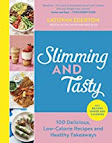*This is a collaborative post*
One of my many new years resolutions this year is to try and eat more fish. I like fish, but never really cook it at home. You will notice there are very few fish recipes on this site!
Wild salmon is the perfect addition to help maintain a rich diet. It is high in protein and low in fat which is the perfect combination for training sessions and because of the high levels of Omega-3 fatty acids that it contains.
This helps with the recovery of joints and muscle soreness, allowing the body to train for a longer period of time and at a higher intensity.
I've teamed up with Alaska Seafood to bring you this delicious recipe.
Canned salmon comes in two forms: skin & bone and skinless & boneless. The benefits of skin & bone salmon are that it falls apart easily and it is full of calcium.
A 213g can of skin & bone pink salmon has 240mg of calcium. The body needs calcium to build and maintain strong bones. I
t also helps with cardiac muscle protection, weight management, the prevention of kidney stones and dental care. This is a benefit that skinless & boneless cans don’t have.
Seafood from Alaska is wild, natural and sustainable.
Wild: Fish from Alaska swim wild in the icy Pacific Ocean. This freedom to swim and the fish’s natural diet creates superior taste and texture. Wild Alaska seafood is firmer, fitter and a more vibrant fish.
Natural: Wild Alaska seafood has no artificial colouring, preservatives, pesticides or GMOs. Alaska’s fish live in some of the cleanest waters in the world.
Sustainable: Ticking the sustainable box cannot be easier when buying Alaska seafood. When Alaska was founded in 1959 the Constitution stated that their fish “be utilized, developed and maintained on the sustained yield principle”. In Alaska, “sustainable” applies to the fish, the local communities, the fishermen and women as well as well as the economic return.
Wild Alaska Salmon Risotto Cakes

You’ll love this new take on fish cakes, where a simple salmon risotto is left to cool, then formed into cakes, coated with instant polenta and shallow fried until crisp and golden.
Serves: 4 (2 fish cakes each)
You will need:
1 x 418g or 2 x 213g cans red or pink Alaska salmon
2 tbsp olive oil
300g (10oz) risotto rice
1 bunch spring onions, trimmed and chopped
150ml (¼ pint) dry white wine
900ml (1½ pints) hot vegetable or fish stock
75g (3oz) frozen garden peas
8 tbsp finely grated Parmesan cheese
salt and freshly ground black pepper
1 egg yolk
100g (4oz) instant polenta
vegetable oil, for frying
salad leaves, to serve
Method:
Drain the salmon, reserving the liquid. Remove the skin and bones, if desired, then break the salmon into large chunks. Set aside
Heat the olive oil in a very large sauté pan or saucepan and add the rice. Cook over a low heat for 2-3 minutes, stirring all the time until it looks translucent, but not brown. Add the spring onions and cook gently for 2 minutes, stirring often
Pour in the white wine and let it bubble up for a few moments. Add the reserved salmon liquid and a couple of ladlefuls of hot stock. Stir well, then cook over a medium heat for 20 - 25 minutes, gradually adding the remaining stock a ladleful at a time, until the rice is tender
Add the peas, grated Parmesan and salmon chunks, stirring them through gently. Check the seasoning, adding salt and pepper if needed. (See chef’s tip). Cool completely
Add the egg yolk to the cold risotto. Form into 8 fish cakes. Coat the fish cakes in the polenta, then fry them gently in hot oil for 4-5 minutes on each side, until browned. Serve at once with a salad garnish
Cook’s tip: At this point, you could serve the meal as a risotto, garnished with fine shaves of Parmesan cheese, basil leaves and grated lemon zest.
Alaska seafood is available at all major supermarkets including Waitrose, Tesco, Sainsbury’s, ASDA, Morrisons, Iceland, Aldi and Lidl.

%20(1).png)
.png)










0 Comments